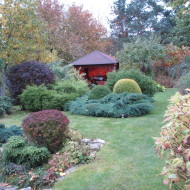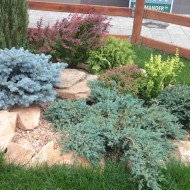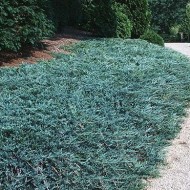Description and landscape application of the horizontal juniper Blue Chip
Content
- 1 Description and characteristics of Blue Chip juniper
- 2 Advantages and disadvantages of the variety
- 3 Video "Description of Juniper Blue Chip"
- 4 Features of agricultural technology of the Blue Chip juniper
- 5 Diseases and pests of the variety
- 6 Landscape compositions with Blue Chip juniper
- 7 Variety reviews
Description and characteristics of Blue Chip juniper
In Latin, the name of the plant sounds quite impressive - Juniperus horisontalis Blue Chip - and for some reason immediately evokes an association with England. And in this case, the intuition is justified: the natural habitat of the horizontal shrub is Great Britain, the USA and Canada.
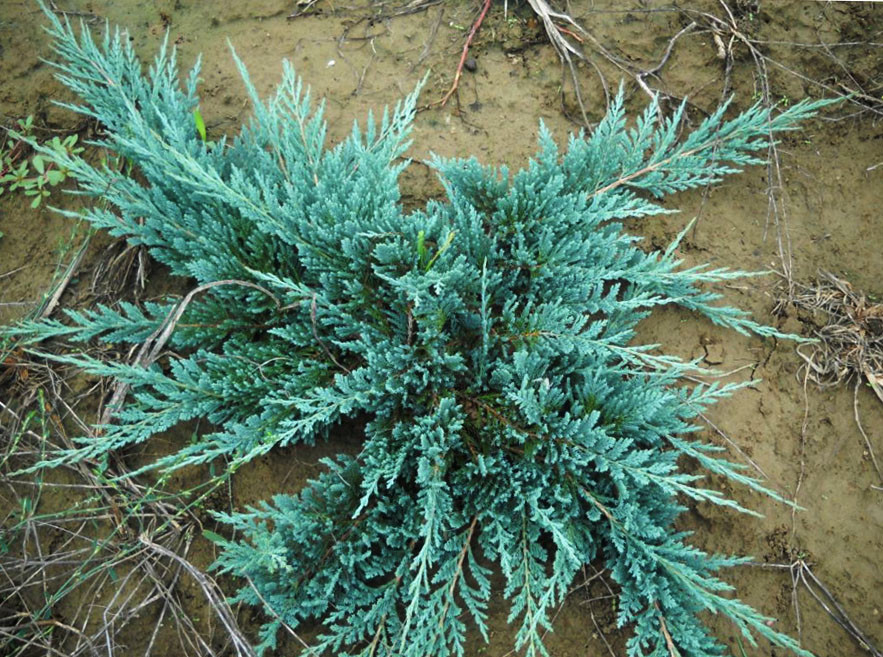
The Blue Chip belongs to the Cypress family. The creeping shoots of Juniperus horizontalis are gracefully raised and spread in different directions, often forming a star shape. Plant height does not exceed 30 cm, rarely reaches half a meter. The diameter of an adult shrub is slightly more than 1.2 m.
The evergreen coniferous shrub has dense, dense needles of an ash-gray or bluish hue, which turns purple towards winter, and takes on a bright green color in spring. It is also noteworthy that rather large cones with a diameter of about 6 mm of a dark blue, almost black color appear on the bush.
The shrub practically does not grow in height, but the length of the shoots increases by almost 10 cm annually. To get a voluminous and large coniferous carpet, you will need to plant more than a dozen bushes.
Genetically, the Blue Chip juniper is adapted to the cold temperatures of the Northern Hemisphere, so it does not need shelter for the winter. But young plants that are grown in regions with harsh winters and lingering cold weather are recommended to be covered with a special covering material.
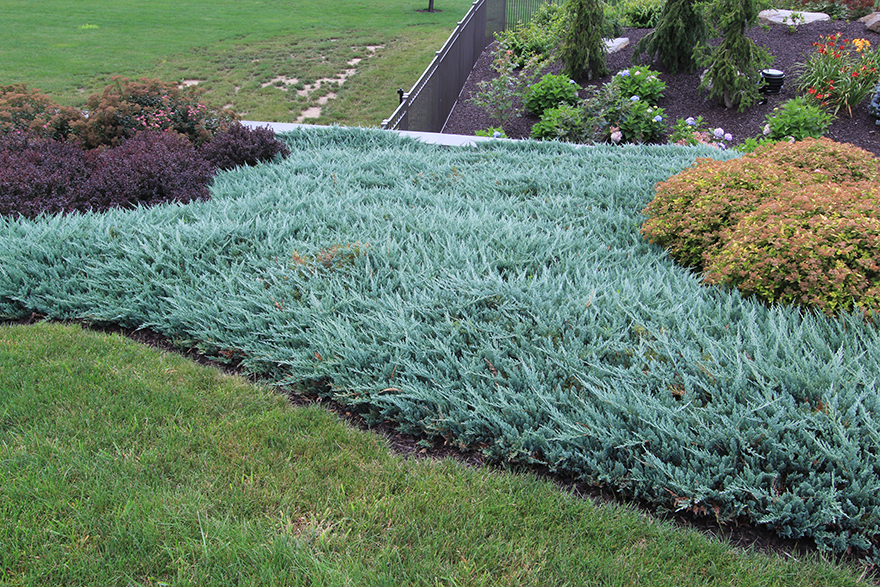
Advantages and disadvantages of the variety
Some plants have specific traits that can hardly be called serious flaws and are considered to be features. The Blue Chip also has its own little quirks that are considered disadvantages among gardeners.
- takes root well and quickly adapts in countries with different climatic conditions;
- phytoncides help purify the air from pathogens within a radius of 10 m;
- cold and frost-resistant;
- unpretentious to the composition of the soil;
- tolerates short-term drought well;
- calmly tolerates the smoke and dustiness of the urban environment;
- possesses a magnificent decorative appearance and pleasant aroma.
- slow growth of shoots;
- does not tolerate waterlogging and stagnant water;
- does not tolerate soil salinization.
Video "Description of the Blue Chip Juniper"
This video shows the varietal characteristics of the plant.
Features of agricultural technology of the Blue Chip juniper
Blue Chip is considered a non-capricious plant. But in order for the decorative appearance of the shrub not to suffer, it is required to provide optimal growing conditions and proper care.
Site selection and preparation
A well-lit, draft-free area will be an ideal place for junipers. Even slight shading can negatively affect the appearance of the bush: loose crown, change in color, even slower growth and development.
If the juniper is planted to strengthen a slope or slope, choose the southeast side or remove objects and plants that will create shade.
Slightly acidic or neutral soils are best suited for Blue Chip. Before planting, the soil must be enriched with mineral fertilizers, introducing complexes intended for conifers. To prevent waterlogging of the soil, it is imperative to take care of a drainage layer of gravel or pebbles at least 20 cm thick, which absorb moisture well.
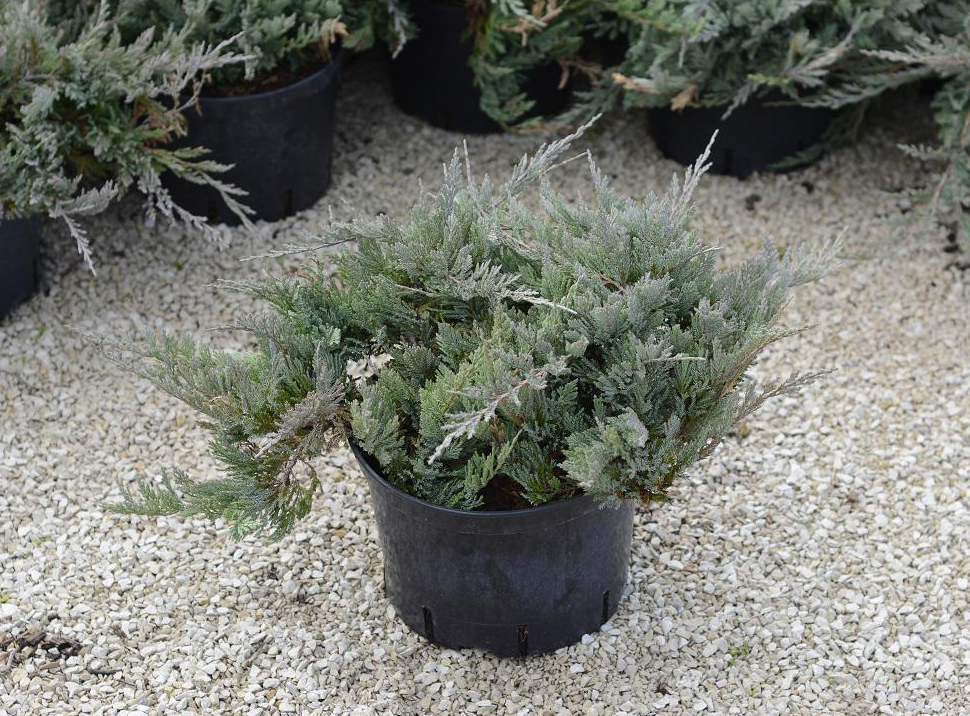
Planting recommendations
It is recommended to plant a shrub immediately after purchase, having previously moistened the soil and plant roots. The optimal time for planting is spring. When planting in spring, the bush will have time to adapt and get stronger before wintering. Given the length of the shoots, the distance between the bushes should be at least 1.5 m. If the bushes are planted too close, then regular pruning will be required to prevent thickening of the crown and rotting of the plant.
The depth of the hole should be from 50 cm to the size of the rhizome. The soil mixture can be prepared independently from turf, river sand and peat. The main requirements for planting are to prevent flooding of the bush and deepening of the root collar.
Subtleties of care
Regular loosening after watering or precipitation, as well as mulching the soil, are the key to the formation of a beautiful dense crown of a juniper. Loosening provides air access to the root system. Mulching the near-trunk zone with sawdust and chips ensures moisture retention and insulates the roots. To avoid thickening inside the shrub, and also to reduce the risk of fungal infections and pests, weeds should be removed regularly.
In order for the bush to take root and adapt well, at first it is often, but not abundantly, moisturized. When the plant gets stronger, there will be enough rainfall to moisten the crop. Additional watering is carried out during dry hot seasons. Also in the spring, the plant is fed with nitrogen-containing fertilizers.
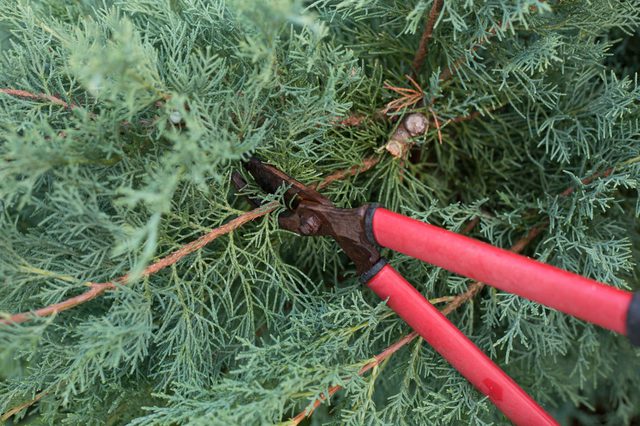
Shrub pruning is carried out in the spring, before the start of active sap flow. This removes dry, damaged and abnormally growing shoots. The crown is also given a shape if the plant has grown. For the winter, it is enough to mulch an adult bush with fresh sawdust and straw.
Diseases and pests of the variety
Improper care or adverse weather conditions can cause fungal infections, rust and rot. In such cases, it is recommended to spray the bushes with copper-containing preparations and fungicides. If the disease has spread to the entire bush, then it must be uprooted and burned, and the soil must be disinfected.
Also, the plant can be annoyed by pests: aphids, sawflies, gall midges, spider mites, pine moths. To get rid of them will help special chemicals - broad-spectrum insecticides.
Landscape compositions with Blue Chip juniper
Blue Chip will not only decorate an alpine slide, flower bed, rocky garden compositions, but also perfectly strengthen the slope or slope. Ideal for Japanese mini-garden landscape. The shrub can be used for zoning, planting neat curbs, decorating the boundaries of paths and artificial reservoirs. Original compositions are obtained by combining juniper with thuja, spruce, stones.
- Mixed mixborder
- Alpine slide
- Coniferous carpet
- Growing on a trunk
Variety reviews
“In our harsh climate, not every plant can take root. And so I want to decorate the garden with greenery. Blue Chip perfectly complements the wood and pebble paths, and also looks great with reeds near an impromptu stream. "
“As a rule, there is no time to deal with a summer cottage. Therefore, we have taken care of the simplest, minimalist design and plants that do not require special care, annual replanting, and also resistant to adverse conditions. Thuja and Blue Chip juniper were planted from the greenery on the recommendation. The cultures fit perfectly into the overall mood. And they delight with a palette of shades. "
If you prefer shrubs to flowers, then you just need to pay attention to the Blue Chip. It does not require special care, but it will certainly delight you with a seasonal change of colors and original coniferous shoots with coniferous berries.

